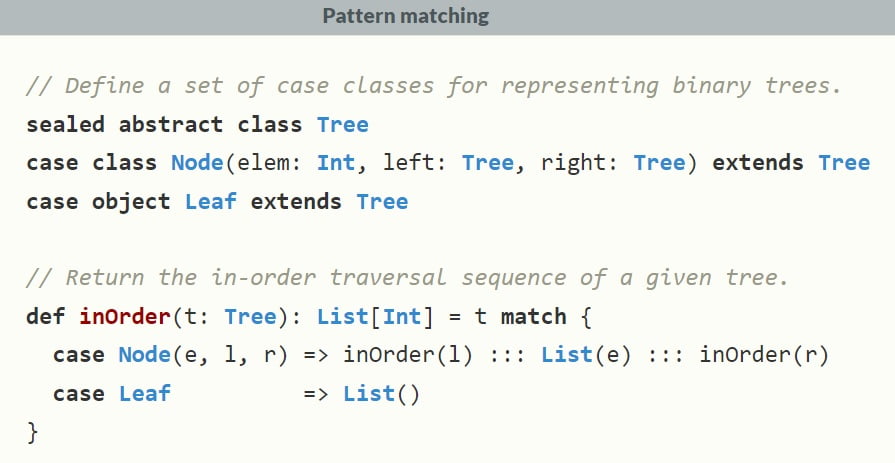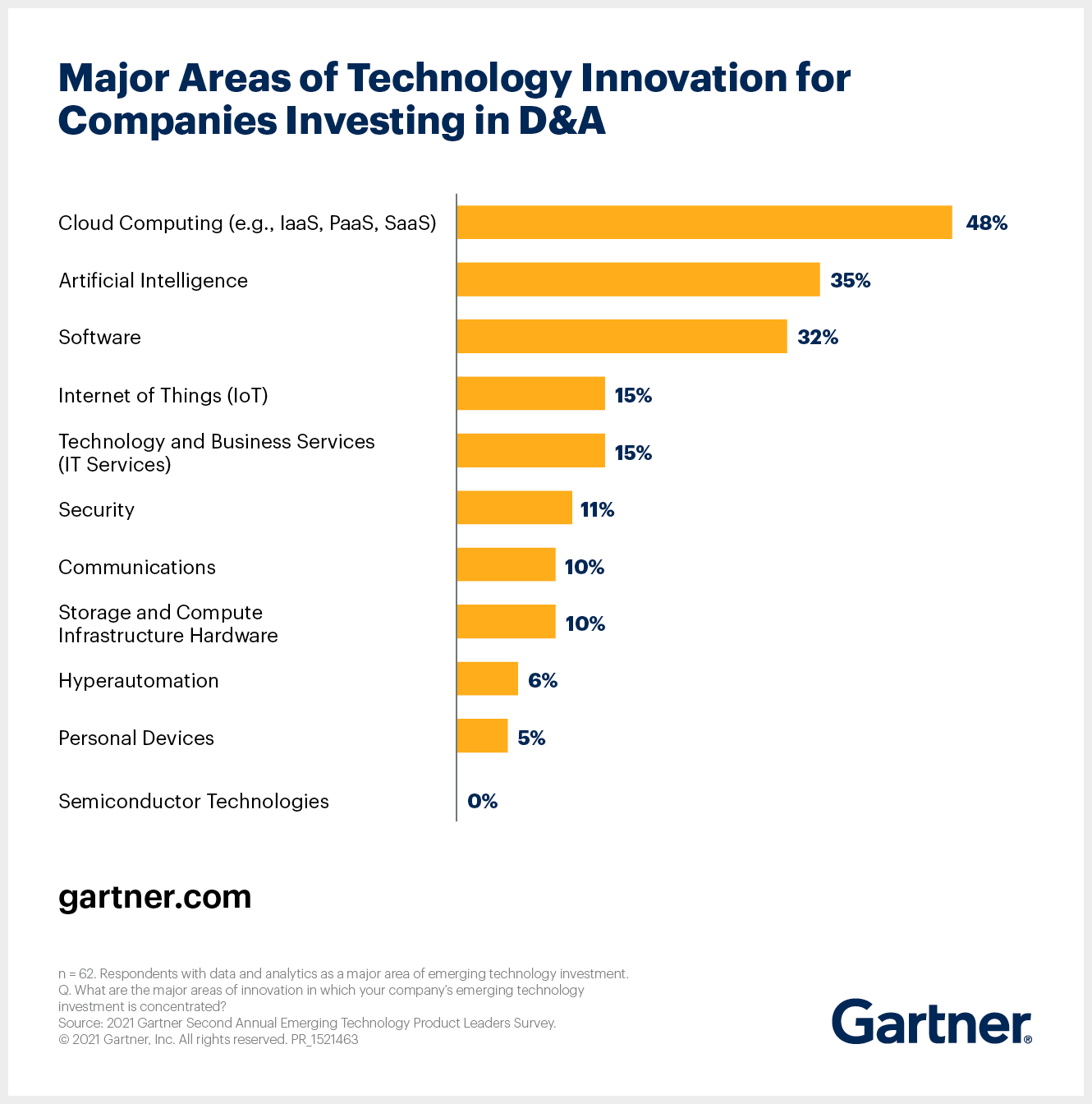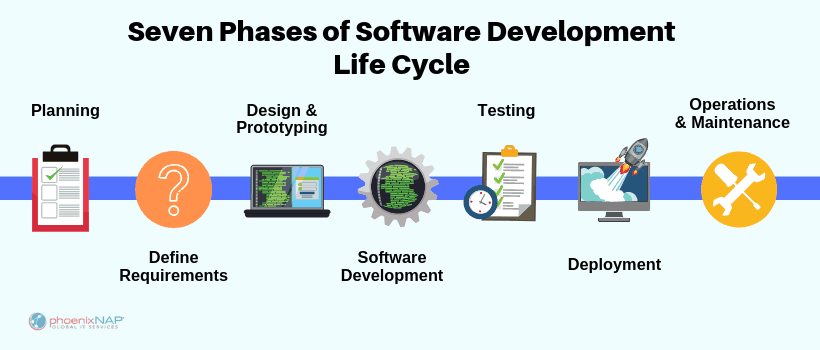The consistent growth and advancement in modern technology lead many businesses to open more job opportunities for IT professionals. Now would be an excellent time to advance your tech career or make a career shift. To help you make an informed decision, I’ll discuss the top IT skills worth investing in.
I also explored my luck in top technology companies before starting my career as an entrepreneur. And the first thing I did was polish my technical skills and learn new ones to help me get the job I wanted faster. If you are, too, I have prepared a list of in-demand technical skills that you must learn to have a higher chance of getting hired.
All tech skills included in the list are categorized based on the areas of discipline it belongs to. Let’s get started.
9+ top IT skills to learn
Getting the right skills is the key factor to stay relevant, confident, and competitive in the talent marketplace. Keep reading to know the top IT skills that can help you outshine other applicants and land a job faster.
I. Information Technology (IT) Infrastructure

IT infrastructure is the main foundation of every organization’s computer system. Therefore, the job opportunities related to it are the most stable never going out of trend. So, it’s a wise investment to learn one or more relevant IT skills to get a job faster.
What is IT infrastructure, you may ask?
IT infrastructure is the component that supports companies to operate efficiently and securely. The right combination of technology can improve the workforce’s processes, communication, and productivity. IT infrastructure components are usually installed on-premises, but cloud computing infrastructure is gaining more popularity due to its accessibility.
1. Computer Networking
IT infrastructure contains both hardware and software components. Having good computer networking skills will allow you to efficiently design, install, operate, and manage everything to optimize its overall performance. You will also take care of the day-to-day operation of computer networks (regular backups, upgrading devices, evaluating network performance, etc.).
To be more specific, you will be able to install cables, networks (LAN, WAN, MAN, etc.), and other hardware devices. Properly doing so will permit the networked devices to exchange and share data with one another seamlessly. You can also perform different troubleshooting methods to identify system failures and bottlenecks quickly.
When everything is set, hardware-wise, you can start configuring and setting up the necessary software. There are two types of software that every computer device must have, and the first one is called system software. It covers software like the operating system (Windows, Linux, Mac, etc.) server software, database systems, utility software, and more.
The other type is called application software, and it covers all business apps that process the needs of the end-users. It’s part of the networking skill to understand each software compatibility with a specific type of computer hardware.
2. Soft Skills
Soft skills, which others prefer to call people skills, refer to the professional attitudes you show when interacting, communicating, and collaborating with others. It may not be a technical skill, but all organizations require their employees to possess these skills, no matter their job roles. But it’s particularly important to employees who have direct contact with customers or clients.
You, too, can benefit from having soft skills when aiming for a helpdesk support role. Helpdesk support is one of the critical areas of IT infrastructure to help end-users resolve their issues. Different IT help desk support levels are available, but you must possess various soft skills like the ones listed below.
- Active listening is the top skill to build trust and establish rapport. Through this skill, you can attentively observe the speaker’s messages and respond to them appropriately.
- Pair it with an effective verbal communication skill to provide the feedback with utmost clarity, empathy, and transparency.
- Problem-solving skills are also handy because it helps you understand why an issue is happening and identify the best solution for it.
Since the pandemic hit, remote and hybrid working setups have been adopted. This allows recruiters to hire people all over the world. Hence, it will benefit you greatly to be multilingual. English, Chinese, German, and French are the top languages to help you get hired.
Quick Note: Top IT Skills For Helpdesk Support
The IT skills you need depend on the level of support you want to be involved in. You can get these skills through in-depth knowledge and firsthand professional experiences. To help you understand, I have listed each support level and the most important skills you must have.
- First-line support is responsible for attending to the daily issues and resolving minor incidents. Basic troubleshooting skills and in-depth knowledge of company resources are required.
- Second-line support handles more complex jobs that usually require a personal visit to the end user’s workstation to fix the problem. Adding problem management to your skillset is a must.
- Third-line support handles all technology-specific issues via email, phone, and face-to-face. They are composed of higher-level specialists such as network support and R&D experts. A technical-focused higher national diploma (HND) or degree is also required for this position.
3. Cloud Computing
Did you know that 48% of tech companies already invest in cloud computing technology? Companies made the shift mainly because this infrastructure technology allows them to expand their capacity fast while minimizing downtime.
The pandemic also played a significant role in this change as most companies shifted to a remote working environment. Those are the reasons why cloud computing skills stay as high-demand IT skills. As standard, you must understand all aspects of cloud migration – infrastructure, security, and networking.
You must also know the different types of cloud services available in the market. Whether for storage or computing purposes, it’s essential to choose the most appropriate cloud service for your business. This will ensure that it can support your business as it grows and maintain flexibility.
Before purchasing one, it’s recommended to look at each cloud service and learn its strengths. Currently, there are three, and each has unique strengths. I have listed the three types of cloud services to give a clear idea.
- Software as a Service (SaaS) provides access to business applications via a web browser. It’s a ready-to-use platform hosted on a remote server and accessible solely over the internet. You can get it by purchasing a monthly or annual subscription license (example: Google Workspace, Dropbox, and Salesforce).
- Platform as a Service (PaaS), often called middleware, is the ideal cloud platform for software creation (example: AWS Elastic Beanstalk, Windows Azure, and OpenShift). It’s also web-based, making it easier for developers to design, create, and develop a custom application. It often offers a ‘pay-as-you-go’ pricing policy, allowing organizations to pay only for what they used.
- Infrastructure as a Service (IaaS) is your best option to get complete control over your cloud computing infrastructure. It uses virtualization technology to provide network, storage, servers, and processing power. Rackspace, Amazon Web Services (AWS), and Microsoft Azure are a few available products.
Processing a huge amount of data daily is time-consuming. Possessing proper data analysis and management skills will help you gather better insights while managing the organization’s big data. You are also required to have DevOps expertise to manage all deployed applications in the Cloud environment efficiently.
Quick Note: Non-IT Skills Required For Cloud Architect & Engineer
Cloud migration also requires proper time, budget, people, risks, and resources management. So, it’s wise to hone your project management skills. Get yourself familiar as well with various financial and business concepts such as the return of investment (ROI), marketing strategies, business plans, etc.
II. IT Development
Finding your next job in IT development is a wise move. Since it’s the foundation of software and application creation, the jobs it offers promise stability and there’s always a strong demand in the job market. The best part of it, you are not limited to building your career in tech companies.
Modern technology has a strong and essential impact on all industries. Therefore, all companies are now searching for qualified IT developers to create and maintain helpful software programs. There are different specializations under IT development, and each possesses unique sets of IT skills.
4. Programming Languages
IT development is about writing, testing, debugging, and maintaining applications and software programs. Therefore, the basic skill required is mastering one or a few programming languages. There are plenty of options, but keep in mind to choose the best one that aligns with your specialization.
4.1 Web Development
The Internet is full of content and web applications. As long as there’s a demand, companies will keep on hiring a dedicated web development team. You need to learn basic programming languages when creating web designs, such as HTML, JavaScript, and CSS.
These are also handy for optimizing your websites to provide a better user experience (human and search engines). HTML is suitable for creating static web pages. If you want to increase customer retention by creating interactive websites, use React instead.
React is a front-end JavaScript library used for building user interfaces (UI). It isn’t difficult to learn as long as you know HTML, CSS, and other front-end languages. It’s an open-source library, so you can freely improve the design based on the company or project’s requirements.
The primary tasks in the React.js Developer’s job description are designing and implementing UI components for mobile apps and JavaScript-based web apps. But of course, it isn’t limited to those tasks. I have listed below all other necessary tasks they can perform.
- Identifying web-based user interactions
- Perform browser-based debugging and performance testing
- Documenting application changes
- Developing updates
If you want to focus more on the website’s backend, you can pick PHP, Python, Ruby on Rails, Java, and other C-like languages. Programming languages like Microsoft SQL and MongoDB are recommended if the company requires document databases.
4.2 eCommerce Development
More than 24 million eCommerce sites exist across the world wide web. Therefore, it’s advisable to expand your knowledge with programming languages dedicated to eCommerce development. Java is the most popular programming language because of its convenient interface, and it works well on all web browsers.
No matter what you sell (PyroMania fire pit bowls, books, etc.), the integrated development environment can make the entire creation process efficient and seamless. On top of your web development skills, you can learn the MEAN stack.
MEAN stands for MongoDB, Express, Angular, and Node. This is a JavaScript-based framework that can provide top-notch performance, scalability, and real-time response (instant update without reloading the page). It rose to popularity because it allows IT developers and programmers to use the same programming language in designing the website’s frontend and backend.
4.3 Mobile Development
Another area of IT development that is currently booming is mobile app development. Take advantage of it by learning its dedicated programming languages. Most of its languages are similar to web applications, but there are a few additions like Kotlin, HTML 5, Swift, and Dart.
There’s a high demand for mobile apps, particularly in the eCommerce industry. Lots of business owners are creating their own apps so customers can access their products (custom sola wood flower bouquets or art supplies) 24/7.
4.4 Software Development
Software creation is divided into seven phases, and software development lands in the fourth phase. This is where the coding begins to build the defined requirements into the software project. Java, Python, and C++ are the common programming languages used.
Scala is also great to learn. It’s a modern version of Java that combines object-oriented and functional programming. As a result, software developers are allowed to execute complex procedures and process data in parallel.
It also has a unique pattern-matching function to quickly match against class constants, hierarchies, sequences, and more. I have included an example to give you an idea.

4.5 Blockchain Development
Blockchain technology was initially developed to support Bitcoin. But due to the public’s growing interest, gaining 81+ million users worldwide, it has now evolved to support all cryptocurrencies. So, blockchain will stay for a long time and create new opportunities for IT professionals.
Becoming a blockchain developer will help you build a private blockchain and secure all digital assets. You can start learning Solidity, an object-oriented programming language that runs on Ethereum Virtual Machine. It’s developed to create smart contracts for blind auctions, multi-signature wallets, safe remote purchases, crowdfunding, etc.
Learning Solidity is easy if you are well-versed with C++, Python, and JavaScript. These programming languages heavily influenced the creation of Solidity. There are also tons of free tutorials online that you can use for reference.
Vyper, Golang, and Simplicity are other excellent programming languages you can learn. Besides learning the required programming languages, you must also have an extensive understanding of the topics below.
- Cryptography and security principles
- Blockchain database types
- Algorithm and data structures
5. Machine Learning
Artificial intelligence (AI) isn’t a new technology. Companies widely use it to solve actual problems and execute tasks without human intervention (via automation). Machine learning is one of the subfields of artificial intelligence.
It uses various methods to learn from historical data and predict outcomes accurately. Chatbots, social media feeds, and predictive text are a few good practical applications of machine learning. It can do more depending on the industry that will use it.
Take the commerce industry as an example. It is one of the many that embrace this AI-powered technology, and they use it to build personalized recommendation algorithms, optimize products, and more. Some also use it to enhance their customer service and forecast sales and demand.
Mastering machine learning may not be easy, but it is worth your time and money. To achieve success in this career, you must have the below skills.
- Data science
- Software engineering
- Neural network architectures
- Processing audio and video
- Advanced signal processing techniques
- Build and optimize a machine learning model
III. Data
Getting valuable insights from large volumes of complex data or big data is challenging for companies. The basic skill you need to acquire is data analysis. Through extensive processes combined with statistical and logical techniques, you can interpret any data and draw accurate conclusions.
Assuming that you already possess data analysis skills, you can focus on upgrading your IT skills. You can learn more advanced approaches to boost your career. The below IT skills are great to add.
6. Data Science
Data science is the advanced version of data analysis. It uses complex machine learning algorithms and other modern tools to extract valuable insights and uncover hidden patterns from raw data (structured and unstructured). Due to the effectiveness of its method, it has become the go-to strategy for resolving business problems.
The data scientist can also build predictive models and machine learning algorithms, analyze data from different sources and formats, and more. Analytical and statistical skills are highly required for this job role. Possessing programming skills for R, SAS, Python, SQL, Hive, Matlab, Pig, and Spark is also recommended.
7. Data Visualization
Presentation of data matters. Too much information overwhelms your audience and may confuse them about the core message. This is why data visualization rose to fame because it translates the data into a visual context.

Data visualization uses various visual elements such as maps, graphs, charts, and histograms. Colors can also be added to identify the difference between specific data from the others quickly. It would be best to have basic visual design and storytelling skills to ensure you can effectively connect with your audience.
Data visualization is flexible to use, and one practical application of it is for eCommerce. For example, the company sells KURU Footwear. You can use charts, timelines, and other visual elements to highlight the present consumer trends, behavioral patterns, and more.
IV. Cybersecurity
As internet technology evolves, more threats emerge. Currently, 2,200+ cyberattacks are happening every day, and they continue to grow. This makes everyone nervous about their online safety.
Having cybersecurity skills surely will provide you with good benefits now and in the future. Most of the top IT skills I have mentioned above are part of this skill. Aside from those skills, you must also add the below tech skills to help you get into the cybersecurity field.
8. Risk Analysis, Management, And Mitigation
Cybersecurity professionals must understand all potential risks and gaps to protect the entire network and information assets effectively. They can do so by performing risk analysis. Here, they can identify and analyze all issues and develop a response plan to strengthen security.
Once the risks are identified, cybersecurity professionals can prioritize them based on the business objectives. They can also prioritize each risk based on the severity of its impact. The last step is risk mitigation, the process of organizing risks into different elements – prevention, detection, and remediation.
Risk analysis, management, and mitigation are ongoing processes. This is intended to immediately detect vulnerabilities, remediate, and monitor the results. Cyber threats are constantly changing, so you must improve your skills and knowledge to handle all types of threats well.
9. Security Audit And Compliance
A cyber security audit is an internal evaluation to ensure that appropriate security policies, procedures, and controls are working effectively. After the audit, you can address all the issues found and improve the defense plan. Also, you can assess compliance with various regulatory authorities and laws.
The regulatory standards you need to comply with will depend on the organization’s industry and the country they are operating. It would be best to check the national and local regulatory agencies near you.
Here’s a good example. If the business belongs to the healthcare industry, you must have a working knowledge of HIPAA (Health Insurance Portability and Accountability Act of 1996). Other regulatory standards you need to comply with are listed below.
- PCI-DSS (Payment Card Industry Data Security Standard): Any organization that handles and processes credit card information
- SOC 2 (Systems and Organizational Controls): Modern technology companies that store customer data in the cloud
- SOX (Sarbanes-Oxley Act of 2002): Mandatory compliance for all public companies
- GDPR (General Data Protection Regulation): The strictest privacy and security law.
Bonus: Ethical Hacking

In earlier years of the internet, no one truly knew how vulnerable an organization’s network and infrastructure were until they were attacked. Fortunately, ethical hacking has been introduced so cybersecurity professionals can test the network’s defense up front.
This is an exciting skill to learn because you will have the opportunity to understand the mindset and techniques of different hackers. From there, you can predict potential risks and develop the best method to remediate them. To become exceptional at this skill, you must have extensive knowledge of programming, networking, database management systems, hacking tools, servers, and search engines.
Conclusion
People look for new jobs for different reasons. But whatever the reason, the main goal is to get a better and long-term job opportunity. Information technology (IT) is undoubtedly one of the promising industries to join now that it has become a significant player in the global market.
Since technologies are changing rapidly, you have to equip yourself with the right and latest IT skills to get an advantage over the competition. All the top IT skills mentioned in this post can help you secure a job faster. Getting a computer-related degree is essential, but it isn’t the only way to get these IT skills.
You can also get them through online courses, boot camps, and passing an IT certification examination (example: CCNA, CISSP, etc.). Do you have more top IT skills to share? You can leave it in the comment section.








0 Comments